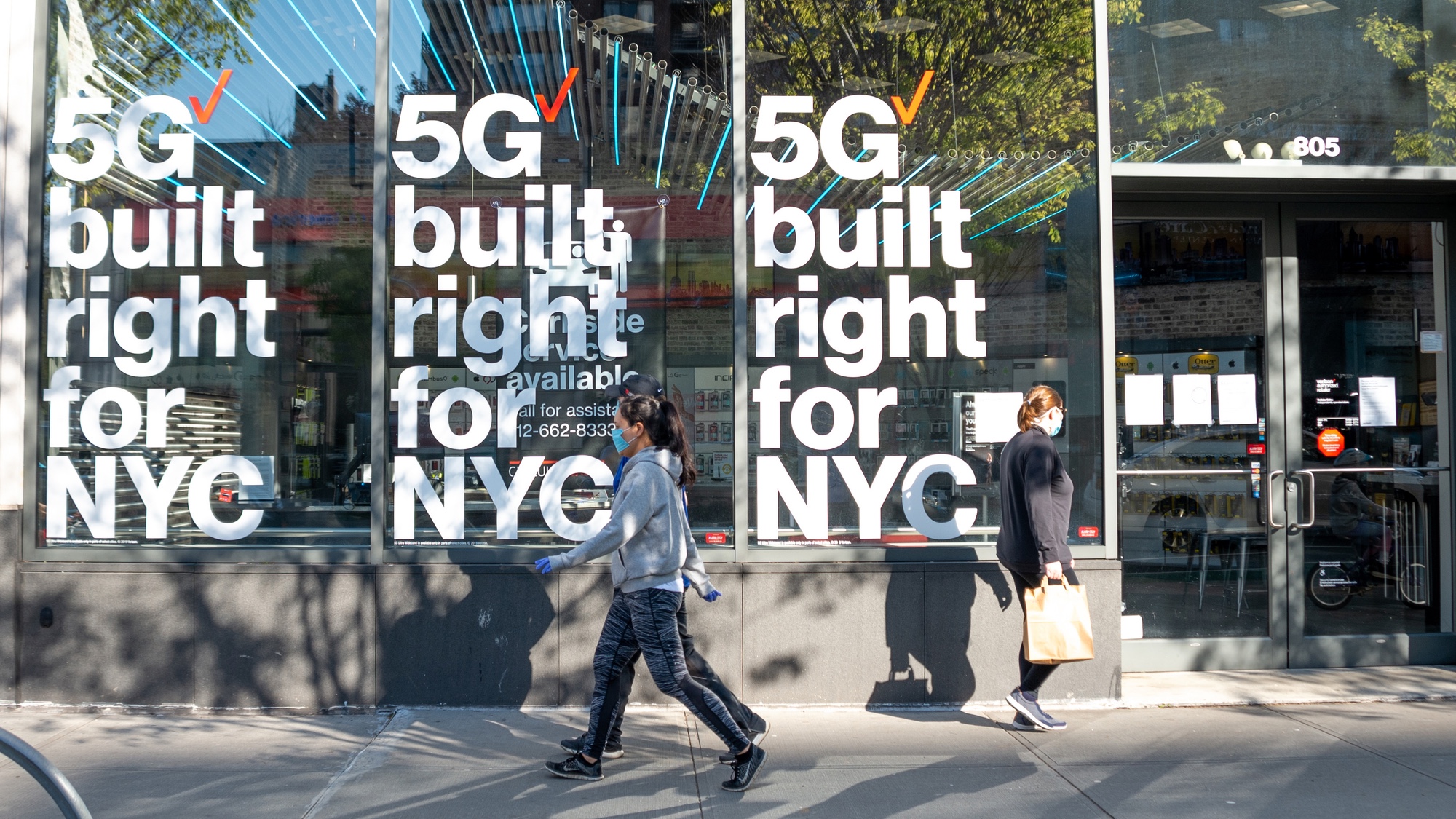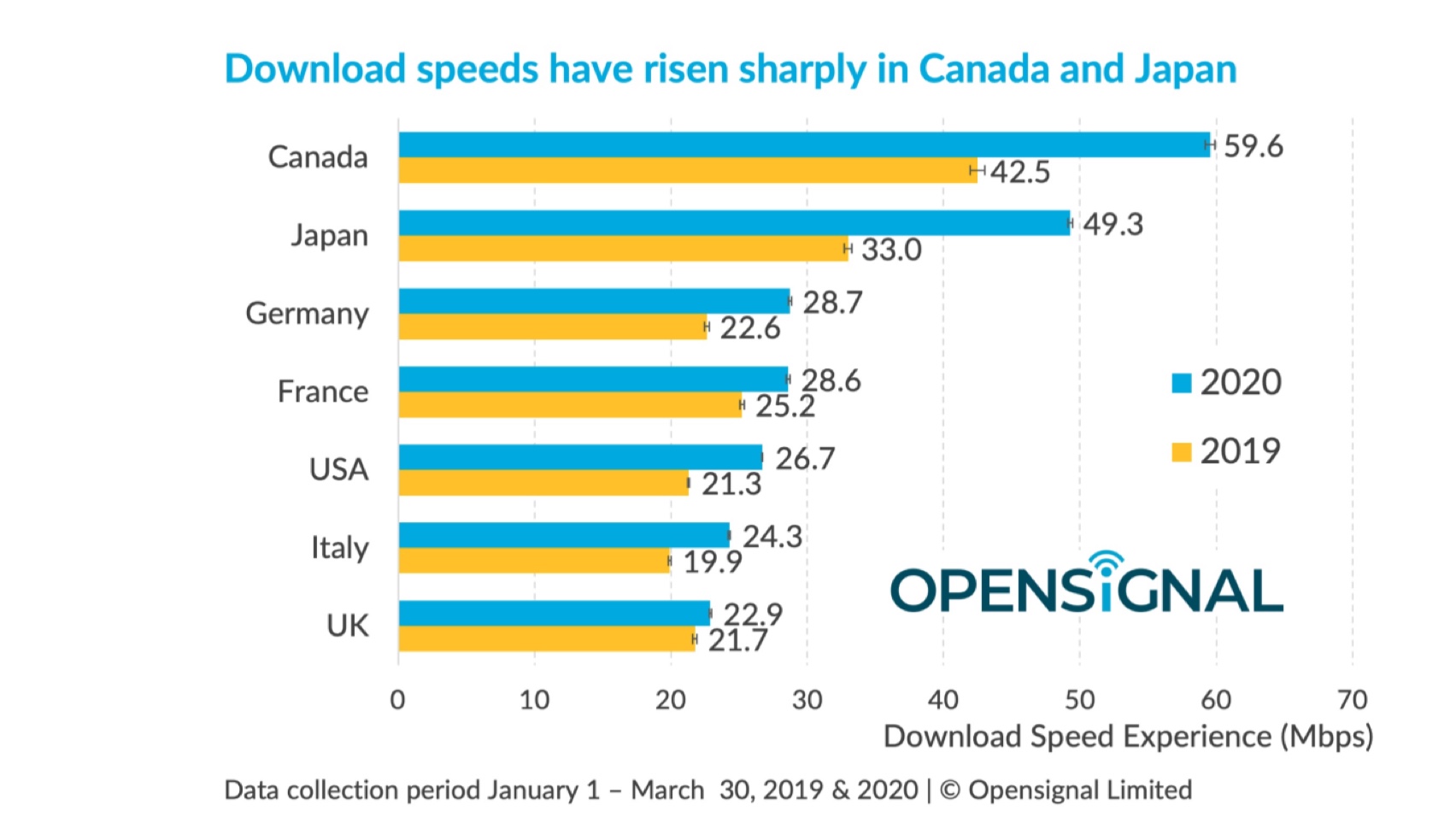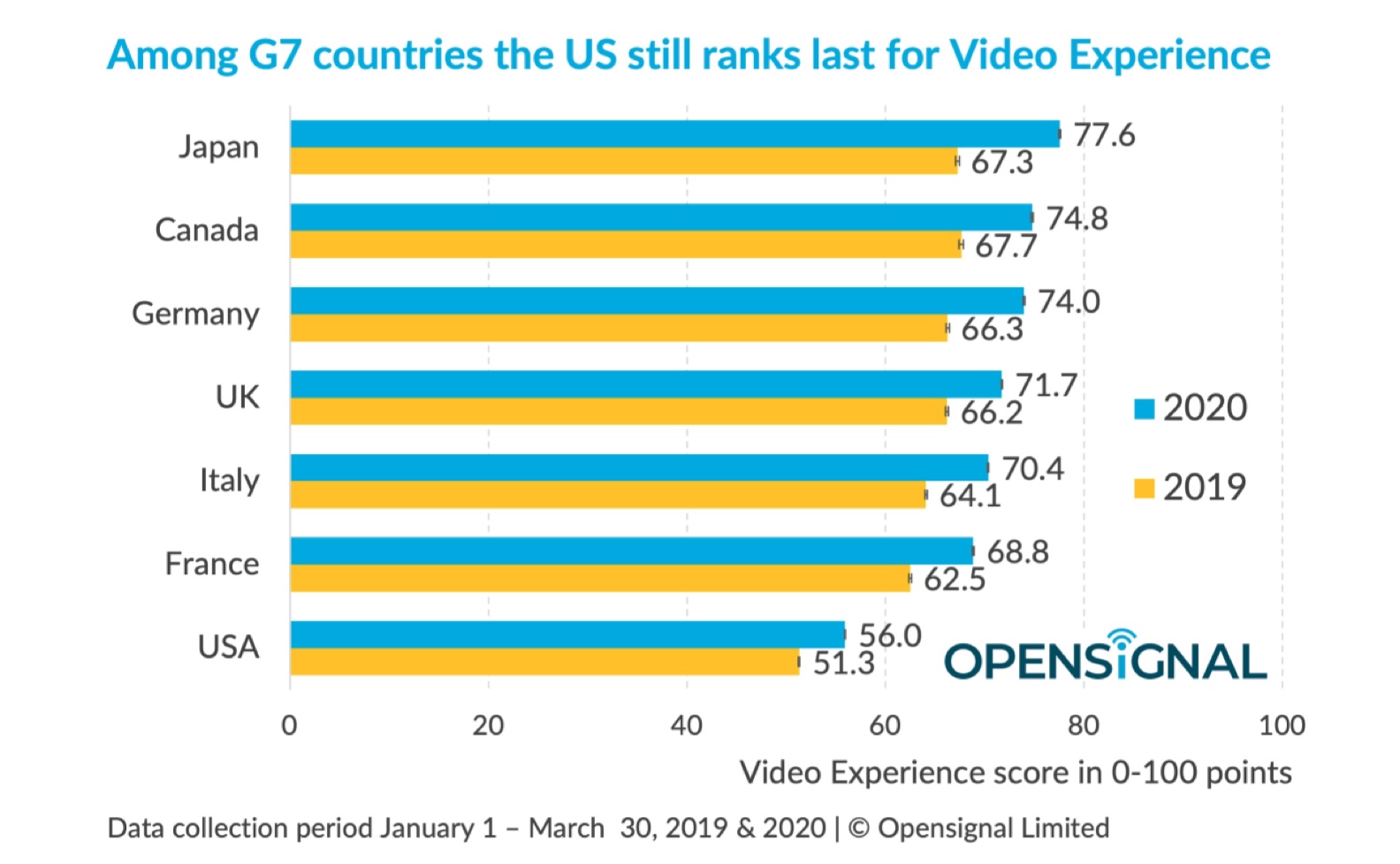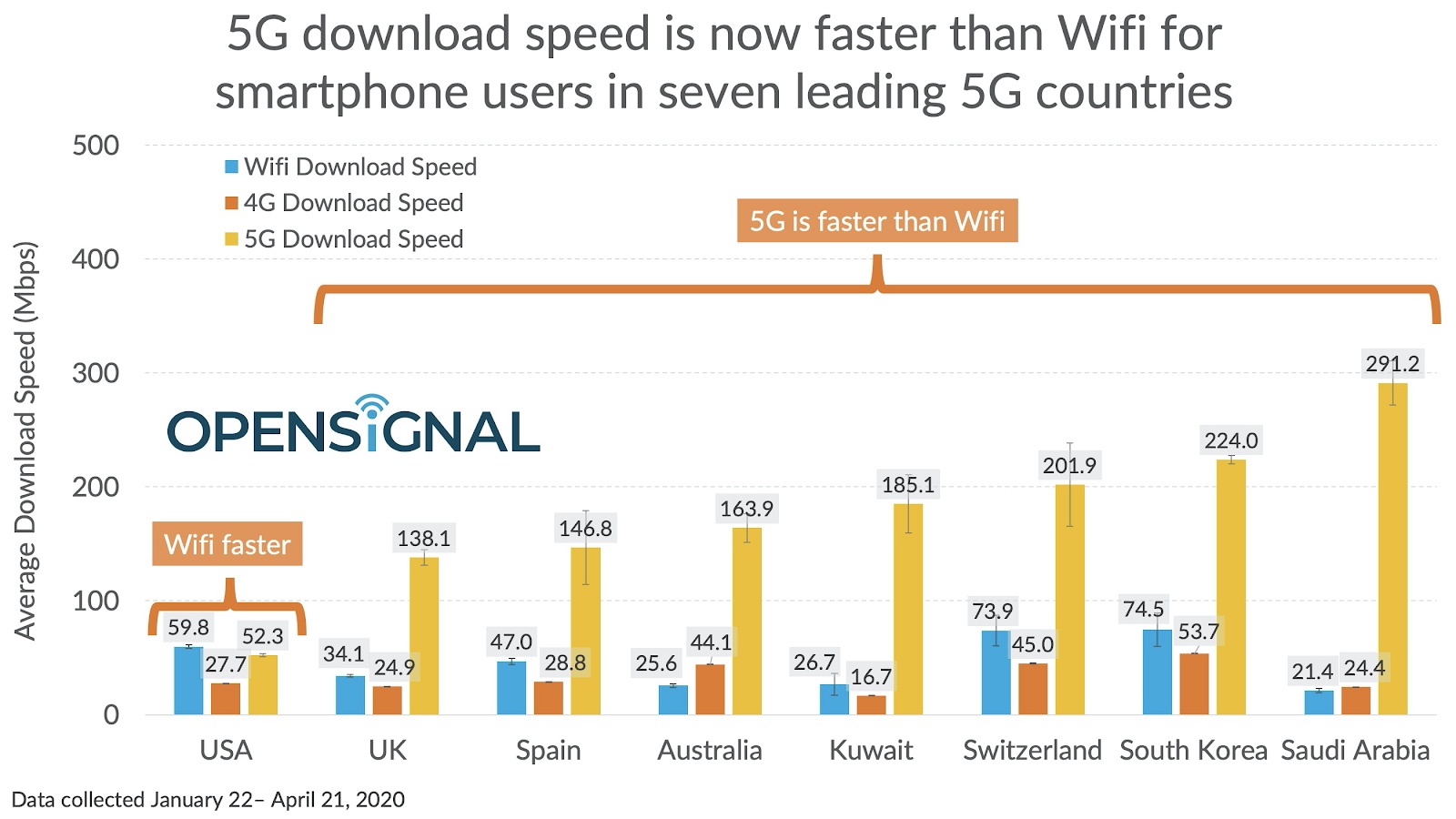The 5G revolution has been a big fail so far
New 5G performance reports show only modest speed gains so far

If you've picked up one of the best 5G phones in the past year only to find yourself wondering "Where's the 5G speed?" it's not just you. A couple of new reports suggest that you're right to feel disappointed with what 5G has delivered so far.
The latest report out this week from OpenSignal looks at the progress of 5G networks across the globe, and overall it paints a positive picture. Mobile experiences over 5G are improving in multiple countries, the independent testing firm concludes, with mobile users enjoying better video experiences over 5G in more places than a year ago.
- What is 5G? The definitive guide to the new network
- Find the best cell phone plans for your needs
- Plus: Samsung Galaxy Note 20 secret weapon could crush the iPhone 12
But dig into the numbers, and the US 5G performance won't exactly get people beating down the doors of the local phone seller to grab the latest 5G devices. OpenSignal found that overall download speeds rose to 26.7 Mbps in the US, an increase of 5.4 Mbps after a full year of 5G. That's ahead of countries like the UK (which gained a mere 1.1 Mbps in the past year) and on par with Australia (which saw a similar 5.6 Mbps gain). But Japan, Switzerland and Qatar all saw download speeds improve by 7 Mbps or more, thanks to 5G. South Korea and Qatar were right behind with respective gains of 6.6 and 6.7 Mbps in the past year.

Watching videos over 5G shows even more of a gap between the US and other parts of the world, according to OpenSignal's numbers. The test firm assess video experience and assigns a rating for each country, with scores of 75 or more qualifying as "excellent."" Seven of 20 countries where 5G has launched have reached that mark, but the US isn't one of them. The US got a score of 56, which falls in the ranking of "very good" — that also happens to lag behind ratings of the other G7 countries.

Earlier this month, OpenSignal put out another report that detailed how the US was falling behind other countries in 5G download speeds. In seven of the eight leading countries for adopting 5G, speeds for the new networking standard are faster than Wi-Fi — the U.S. is the lone exception. Even more damning, the average 5G download speed for the US of 52.3 Mbps is 85.8 Mbps slower than the next slowest country, the UK. The US could double its average 5G download speed and still not catch up.
This isn't a surprise if you've been following along with reports of 5G progress. Earlier this year, another network testing firm, RootMetrics, found that in some places in the US, 5G actually delivers slower speeds than 4G LTE.

The culprit here is not necessarily 5G technology itself, but rather the way US carriers are going about rolling out their 5G networks. So far in the 5G buildout, carriers have been using two approaches — either high-speed mmWave technology or low-band spectrum that prioritizes coverage over speed.
Sign up to get the BEST of Tom's Guide direct to your inbox.
Get instant access to breaking news, the hottest reviews, great deals and helpful tips.
T-Mobile's 5G network has taken the latter approach, and as a result, the Uncarrier can boast to a nationwide network that covers the largest amount of area and people. But T-Mobile's 5G speeds are only slightly faster than the carrier's LTE network, at this point. AT&T, which is building out its the nationwide AT&T 5G network using low-band spectrum with a target of going coast-to-coast by mid-year, finds itself in the same boat.
The early build of Verizon's 5G network uses mmWave, with 34 cities and a number of sports stadiums (which are sitting empty at this point, thanks to the coronavirus pandemic and restrictions against mass gatherings). Those towers deliver the 1 Gbps download speeds often touted as a major benefit for 5G, but their reach isn't very extensive, and it's usually limited to outdoor coverage, as mmWave signals can't penetrate physical structures.
(Verizon just came in for criticism from the National Advertising Division of the Better Business Bureau National Programs, which has told Verizon to make disclosures about the limits of its 5G coverage more clear and to stop advertising that it has "the most powerful 5G experience for America." Verizon has agreed to the former, but is appealing the latter objection to the National Advertising Review Board.)
5G performance in the U.S. will improve, as carriers continue to build out their networks and incorporate mid-band spectrum along with low-band and mmWave technology. That's already happening with T-Mobile, which used the mid-band spectrum it acquired as part of its Sprint merger to fill out its coverage in both Philadelphia and New York City with a full range of 5G coverage. Verizon, too, plans to spend 2020 filling out 5G coverage to help its network cover a wider area.
But right now, you can be forgiven if you think 5G has been over-hyped and under-explained. Wireless carriers, hardware makers and tech writers (present company included) have put a lot of focus on what you'll be able to eventually do with 5G at the expense of explaining how we get from here to there. Hopefully, the underwhelming numbers we're seeing from 5G thus far will lead to better explanations of what we can expect as 5G phones land in the hands of more people.
Philip Michaels is a Managing Editor at Tom's Guide. He's been covering personal technology since 1999 and was in the building when Steve Jobs showed off the iPhone for the first time. He's been evaluating smartphones since that first iPhone debuted in 2007, and he's been following phone carriers and smartphone plans since 2015. He has strong opinions about Apple, the Oakland Athletics, old movies and proper butchery techniques. Follow him at @PhilipMichaels.

